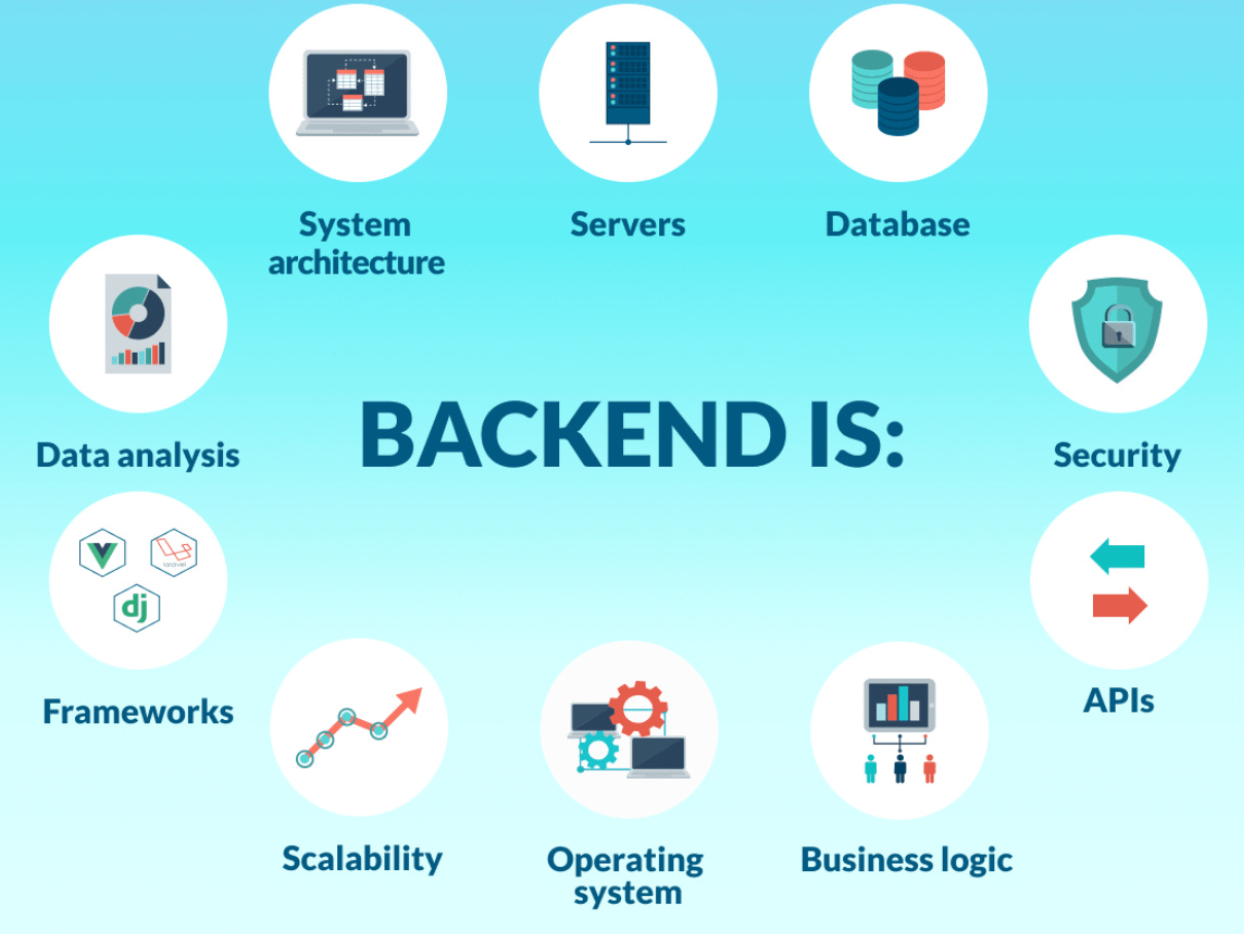
Mastering Back End Development Essential Skills and Practices
In the realm of web development, there are two main components front-end and back-end. While front-end development focuses on the enterprise and back-end of the user, back-end development powers the behind-the-scenes functionality of web applications. In this guide, we’ll explore the world of backend development, exploring its core, key, and fundamental concepts.
Back-end development forms the backbone of a web application, coordinating tasks such as processing data, user input, and managing server-side parties. This ensures that the application works smoothly, securely and efficiently, providing users with an unmarked experience.
Understanding key concepts like server architecture, database architecture, API development, and more is essential for any backend developer. From designing comfortable APIs to implementing validation mechanisms and optimizing performance, mastering the basics is crucial to building a high-quality web application.
Testing and Quality Assurance in Back-End Development
Testing and quality assurance play an integral role in ensuring the reliability, performance and security of back-end systems. Back-end development uses testing methods to rigorously verify server-side code, APIs, and database interaction activity, correctly. Unit testing examines components such as functions and modules in isolation to validate their behavior, while integration testing examines interactions between different components to ensure smooth communication and functionality. Additionally, to-end testing simulates real-world scenarios to validate system behavior, data flow and user interactions. Quality assurance situations include not only identifying and fixing bugs, but also enforcing coding standards, ensuring scalability, and improving performance. Automated tools such as Jist, PHP Unit, and Jnet implement tests, allowing developers to detect problems early in development and deliver code integrity to developable code. With a strong tenancy and quality assurance framework, back-end developers can deliver high-quality, reliable and secure applications that meet the demands of modern web development.
Challenges and Future Trends in Back-End Development
No doubt! Simply put, back-end development undergoes exciting changes as technology evolves. Building modern web applications cannot do justice to this. It is said to ensure that every user gets an experience without discrimination. Also, always concerned about keeping everything cyber secure. Looking ahead, something interesting happens. We’re talking about server-side campaigns, which are responsible for the backup system, promising you to simplify and reduce. But here’s the kicker: all these changes mean back-end developers need to learn and people. All of these tell people from the curve to develop a high-end web application to meet both business and consumer needs.
Back-end Development Database Management
In the thinking world, every application from social media platforms to e-commerce websites plays a role in effectively storing and managing data. Backend Develop Database Press The process of organizing, storing, searching, and securing data for web applications. Here’s a breakdown of how it works:
Organization and Structure
Just as filing systems organize documents, databases organize data into tables, rows, and columns. Each table tracks a specific type of data (eg, customers, products), and rows and columns organize national ticks for those categories of information.
Data Security
Security of sensitive information is paramount. Implementing security measures in databases such as user authentication, encryption, and access to data by unauthorized access, to ensure user privacy is controlled and to comply with regulations such as GDPR.
Data Storage
Store information in databases ranging from user profiles to product specifications. Different types of databases offer different models. For example, SQL databases use a structured query language to apply pre-determined schemas, while NoSQL databases offer greater flexibility, allowing them to manipulate unstructured or rapidly changing data. It happens from for you.
Back-End Development Trends and Innovations
Picture this: a world where developers can dive head-first into coding to manage servers. This is the beauty of serverless computing, a game changer in the technology field. Platforms like AWS Lambda and Azure Functions do the heavy lifting, so developers can focus entirely on writing code. No more worrying about server administration or provisioning – just pure scalability and cost efficiency. It’s like having your own tech gen check your coding!
Containers powered by Docker technologies have revolutionized the way you manage applications. Container orchestration platforms like Kuber provide robust tools for automating system, scaling, and management, making it easier to build distributed systems.
結論
In the dynamic world of web development, back-end development works to support modern applications, driving functionality, security and behind-the-scenes. It’s clear that there are diverse pages of back-end developments, methodologies, and best practices, each building a robust and scalable application.
From mastering database and API design to ground-breaking ideas such as serverless computing and integration, back-end developers have traveled across a range of concepts. With each step, they encounter endless opportunities to innovate. By solving their core problems and adopting a flexible architecture, developers can push their projects to new levels. Result? A headache-free user experience paves the way for continuous growth and success in the technology world.
No Comments